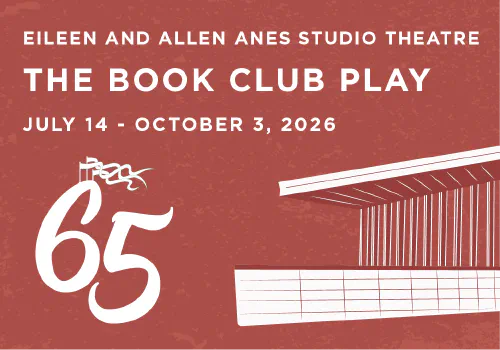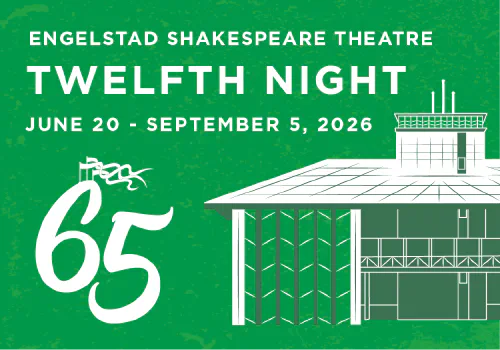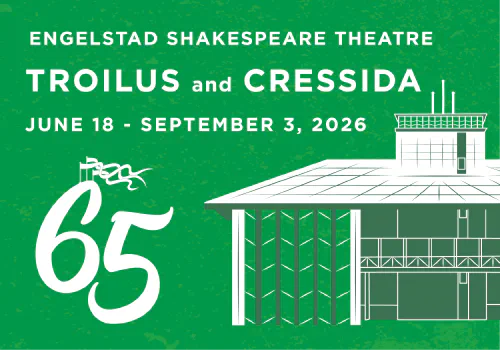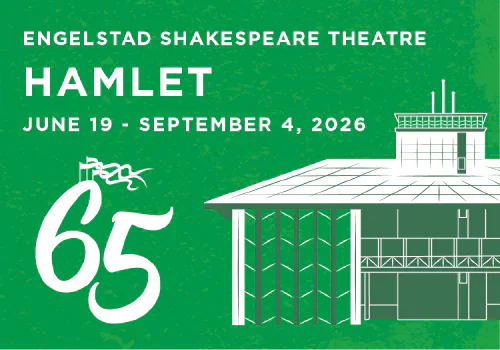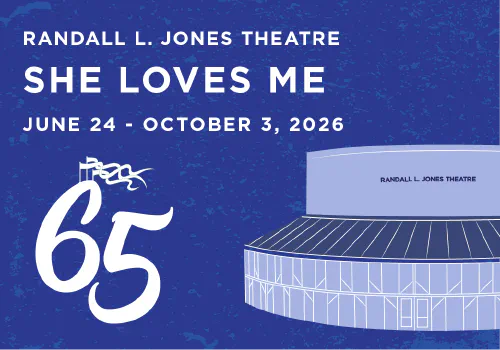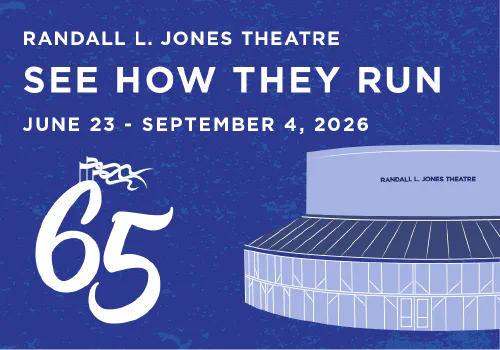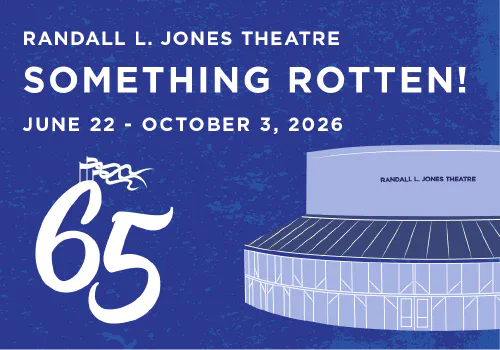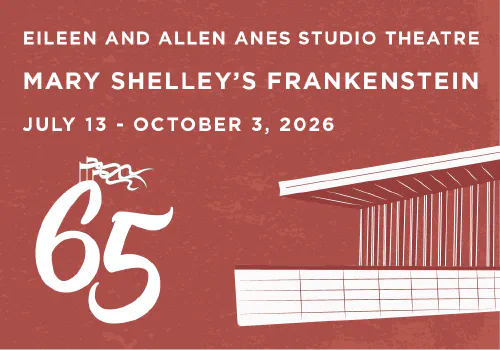OBJECTIVE
Students will identify figurative language, create group movement performance pieces from Shakespeare’s text, and create their own figurative language performance pieces.
INTENDED AUDIENCE
4th grade – 12th grade
TIME
60 — 90 minutes
MATERIALS
- Figurative Language Handout
- Macduff Family’s Death
- Tomorrow, Macbeth Act 5 Scene 4
- The Recorders, Hamlet Act 3 Scene 2
- Recorders Hamlet Video
OUTLINE
-
DISCUSSION
Key words and terms—Literal: taking words in their usual or most basic sense without metaphor or allegory.
Figurative: language that is intended to create an image association that goes beyond the literal meaning of the words: metaphors, similes, personification and hyperbole.
Shakespeare utilizes imagery and figurative language to amplify the power of the text. By identifying Shakespeare’s use of figurative language we can interpret, understand and personally apply a scene. Modern songwriters also utilize figurative language.
For example: Katy Perry’s song Firework:
“Do you ever feel like a plastic bag,
Drifting through the wind
Wanting to start again?
Do you ever feel, feel so paper thin
Like a house of cards,
One blow from caving in?
Do you ever feel already buried deep?
Six feet under screams but no one seems to hear a thing
Do you know that there’s still a chance for you
‘Cause there’s a spark in you
You just gotta ignite, the light, and let it shine
Just own the night like the 4th of July
‘Cause baby you’re a firework”Have the students identify the figurative language in the above stanza and list them. Ask: Why would the poet use these images? How does figurative language amplify the power of a lyric? What is your favorite image in this song? Why? Today we will be exploring the performative power of figurative language.
-
COLORS/LITERAL AND FIGURATIVE
Divide the class into groups of 5 or 6 students. Provide each group with a color (blue, yellow, green, red, orange, purple, black.) The groups will create two performance pieces of the color. They will perform first the Literal color, by performing something that is that color. They will then perform the figurative “quality” of the color, the abstraction. (For example: red could be played as a fire truck (literal), and love, or anger, or heat (figurative.) The groups will rehearse and then perform for the class. After the groups perform, ask the class to identify the color. Ask: Why were you able to identify the color with the performance piece? Culturally, why do specific colors have abstracted meaning?
-
PERFORMING COLORS
Have the class stand up and find an individual space on the floor. Explain that you will be calling out colors and you want them to play the “quality” of the color. Call out Red. Have the class observe the acting choices being made by the students in the class. Some will perform it as love, others will perform it as anger. Ask the students to now add a sound to the color. Call out Yellow. Watch the choices. Call out Blue. Continue adding gesture and oral sound to each color choice.
Key Questions to Ask: Why do certain colors have certain sounds? Do language cues like color in a text provide us with acting clues? What clues to they provide?
-
SHAKESPEARE’S MOVING PICTURES
Figurative Language Handout
Divide the class into groups of 5 – 6 students. Have the class say the following line: “O, full of scorpions, is my mind, dear wife.” Assign the students to create a performance piece of this line. Explain that there are images that you would like them to act out with their bodies. They may form a circle for the word “O”, they may create a scorpion or a brain, which will then morph into a wife. They must say the lines as they perform so the audience will hear the line and see the performance. Encourage them to find the most creative ways to illustrate the words through gesture. Let the students rehearse. The students will then perform and share their moving lines.Key Questions to ask: What images did you see created by other students? What key words were utilized? What is Shakespeare saying with this line? Why is it more powerful than just saying: I’m having bad thoughts?
Give the groups of students the hand-out Figurative Language. Have the groups select a line that the group will create and perform a moving picture piece. Students will select a line, identify imagery, create physical gesture and staging that illustrates the figurative meaning of the line. Have the students then perform the staged movement piece for the rest of the class.
Key Questions to ask: What were some of your favorite images created by other students? Why did your group select the line that you staged? (Generally, most students will pick a line that is loaded with images because they are loaded with performance potential.) Why are they lines so loaded with performance potential? What is it about figurative language that informs a scene for performance.
-
SHAKESPEARE SCENE WORKShow the scene from Hamlet: The Recorders, Hamlet Video
Key question for students: How is the recorder metaphor amplified through the performance? In the play Hamlet, what is Hamlet accusing Rosencrantz and Guildenstern of doing to him?
Provide students with copies of the Tomorrow, Macduff family death, and the Recorder scene.
Have the students read through the scene and identify what is happening in the scene. Have the students identify the figurative language. Have the students circle, write, or record the images and share them with the class. You may choose to do all of these pieces or have the students work through them individually.
Tomorrow, Macbeth Act 5 Scene 4
Imagery includes:
Syllable of recorded time
Brief candle
Walking shadow
A poor playerBird metaphors
Notice the number of times fly and flight are mentioned
During the child’s death, “you egg, young fry of treachery.”The Recorders, Hamlet Act 3 scene 2
Recorder metaphor
Being “played.”
Key Questions for students: What are some of the most powerful figurative language moments within these scenes? How would you perform these moments with the play? Why do we speak in modern day language in figurative language?Have the students select their favorite images and then rehearse and perform them for each other.
ASSESSMENT
Give Me Some Sugar, Baby
Divide the class into pairs of students. The students will be writing a 6 line scene composed of figurative language. The first line of the play is: Give me some sugar, Baby. The next line is a response opposed to the request of “giving some sugar.” It can be something like, “this isn’t a kitchen. I’m too sour for you.” Or “This bakery is closed to people who are cookie like you” Or, built on the metaphor or “baby.” The next line must be built on the metaphor that has been established. Encourage the students to provide metaphors in each six lines of the scene. The students will then perform the scenes to each other.
Have the students identify the most powerful performative images from their peers’ performances and scripts. Encourage students to identify figurative language in modern language, song, prose or plays.



